Some Thoughts on Heart Disease.
We all know what conventional medicine believes are the causes of heart disease. Usually it is not interested enough to ask the question. Non-conventional medicine also has its own belief systems. I would like to suggest another model for the causes of heart disease – a mechanical one.
Whenever we think of heart disease, we conjure thoughts of dental and tonsillar foci, nutritional insufficiency and supplementation, diets, kidney disorders, and such like.
I want to propose a structural cause for heart disease, and another model for therapy.
The relationships of the heart:
- Inside the chest include the pericardium, coronary arteries, lungs, bronchi, vertebrae and discs, intervertebral joints, the thymus, the chest muscles including pectoralis major and minor, and subclavius.
- Above the chest include the jaw joints, the teeth, tonsils, the scaleni muscles, and the Vagus nerve.
- Below the chest include the diaphragm, liver, pancreas, spleen, kidneys, and importantly the pelvic floor muscles.
- Generalised: New thoughts on heart disease suggest that heart disorders may be due to chronic inflammation, especially infections including Chlamydia.
Above the Chest
The Jaws. Bruxism, ie jaw clenching for any reason, will lead to increased tension in all cervical spine muscles. This will place pressure on . . .
The Vagus Nerve. The Vagus acts to slow the heart rate, causes cardiac dilatation, and causes peripheral vasodilatation. The Vagus nerve passes between the Scaleni Muscles. The Scaleni put pressure on the Vagus nerve.
Figure 1
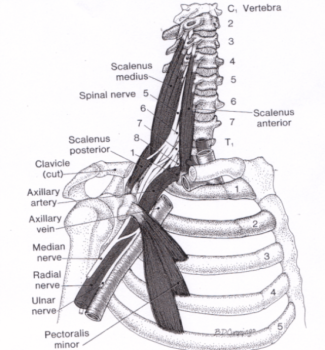
Figure 2
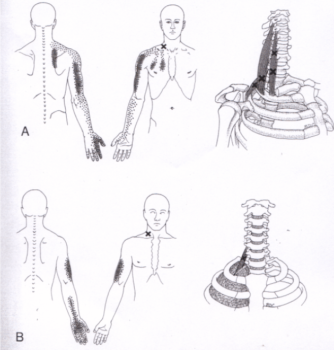
Note how the radiation of trigger points in the Scaleni can imitate pain radiation patterns of cardiac ischaemia.
The Chest Wall
Trigger points in the Subclavius and Pectoral muscles will cause radiation pains identical to that of coronary ischaemia.
Figure 3
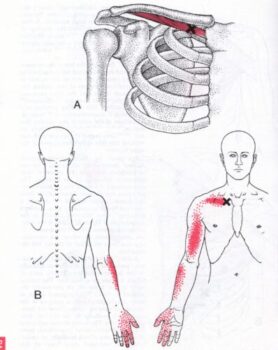
Figure 4
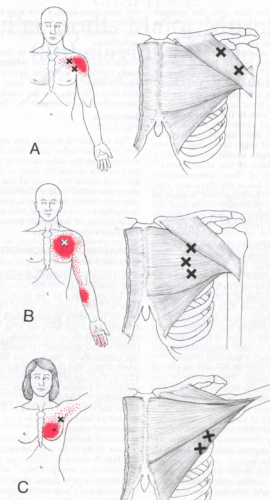
I have treated myo-fascial trigger points in the Pectoral muscles to successfully resolve asthma and bronchitis. If pectoral trigger points can be a cause of broncho-spasm, could they also cause coronary arterial spasm? At this point in time, I have not been able to prove or disprove this speculation. But, who knows?
Below the Diaphragm
Upwards pressure from acute and chronic distensions of the liver, pancreas and spleen will push the diaphragm cephalically. This will push the heart to one side.
From my experience with the Mayr Cure, I discovered that the liver could distend extremely quickly. Up to twice in size after a meal, in a matter of minutes. The pancreatic distension on the other hand exerts a much slower pressure.
The heart hangs from the aortic ring and its associated coronary arterial ring. This allows the heart to move freely within the chest.
Figure 5: A schematic of a healthy heart.
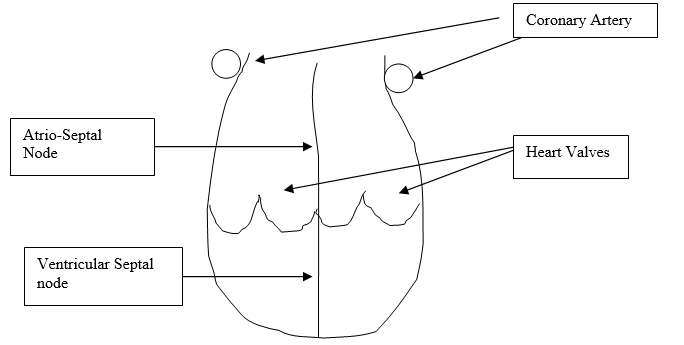
Note: The valves are competent. There is no direct pressure on the coronary arteries nor on the pace makers of the heart.
Figure 6: Acute pressure onto the heart.
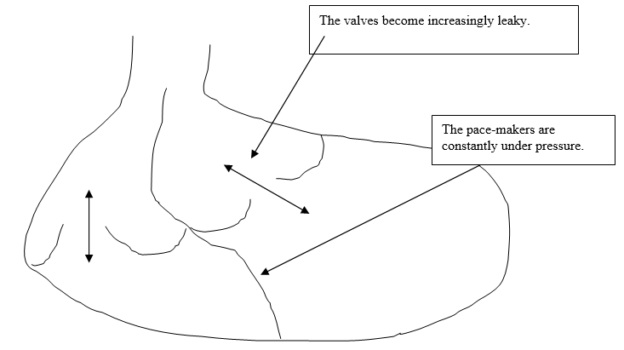
There is direct pressure onto the coronary arteries, predisposing to an acute obstruction to the coronary arteries, as well as direct pressure onto the pace-makers of the cardiac septum.
This process might explain why many heart attacks occur after feasting to excess.
The next scenario is due to a slower progression of pressure. This slower process over several years has the potential to cause the very debilitating, and ultimately lethal congestive cardiac failure.
The very earliest signs of this process are swelling of the ankles, shortness of breath and even chronic fatigue syndrome.
On Chest X-ray, it is usually seen as a prominence on the right heart on the right side of the sternum. Usually, there should be very little heart showing to the right of the sternum. The heart as a whole may not appear to be enlarged. Indeed, the left ventricle may be normal in size. Radiologists will report the X-ray findings as being “normal in size”. This is why it is most important to actually look at an X-ray, and not rely on someone else’s opinion.
Figure 7: The heart is pushed upwards from below.
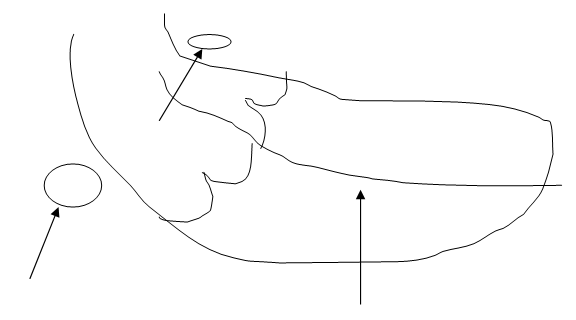
Because the valves are incompetent, the heart has to beat harder and faster to push the same net volume of blood as the situation where the valves are competent. Eventually the heart will suffer chronic fatigue and, “surprise surprise”, begin to fail.
The conventional approach is to attempt to spare the heart by using diuretics, various vaso-dilators and blood thinners. The next approach is to try and strengthen the heart with digoxin.
The obvious approach should be to reduce the upwards pressure on the diaphragm, by treating the intra-abdominal structures. This is, of course, where “alternative” medicine excels.
Two last areas that need to be considered:
- Plantar fasciitis and trigger points and all foot disorders.
Tender points in the feet will cause the body to re-adjust its posture, throwing pressure onto Sp 6, 9 and 10, onto GB 33 and the Ileo-tibial Tract, the hip joints, and pelvic floor. From there, the resultant hyper-extended spine will put pressure onto the spine with consequent innervation issues for the GIT.
- Trigger points in the Iliacus – Iliopsoas muscle group.
This set of muscles forms the floor on which all the intra-abdominal structures lie. Whenever these structures strike the Iliacus trigger points, the liver, pancreas, spleen, appendix, caecum, adrenals and kidneys can become very tender. When the diaphragm presses down onto these tender structures, its movement becomes compromised together with its effect on the heart.
(Anything that causes tenderness in any intra-abdominal organs will have the same effect.)
Therapy hint: In my practice, MORA Color (dare I say, according to Dr Gruba) is spectacularly effective in the treatment of trigger points. You may be able to obtain a copy of my presentation on MORA Color at Rust Germany Nov 2006 from OIRF.
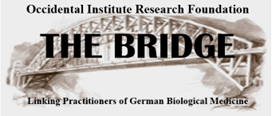 A confidential exclusive article for Members
A confidential exclusive article for Members
From THE BRIDGE Newsletter of OIRF
Published December 15, 2006
© Copyright 2006, Dr. Sir Zenon Gruba, Victoria Australia


